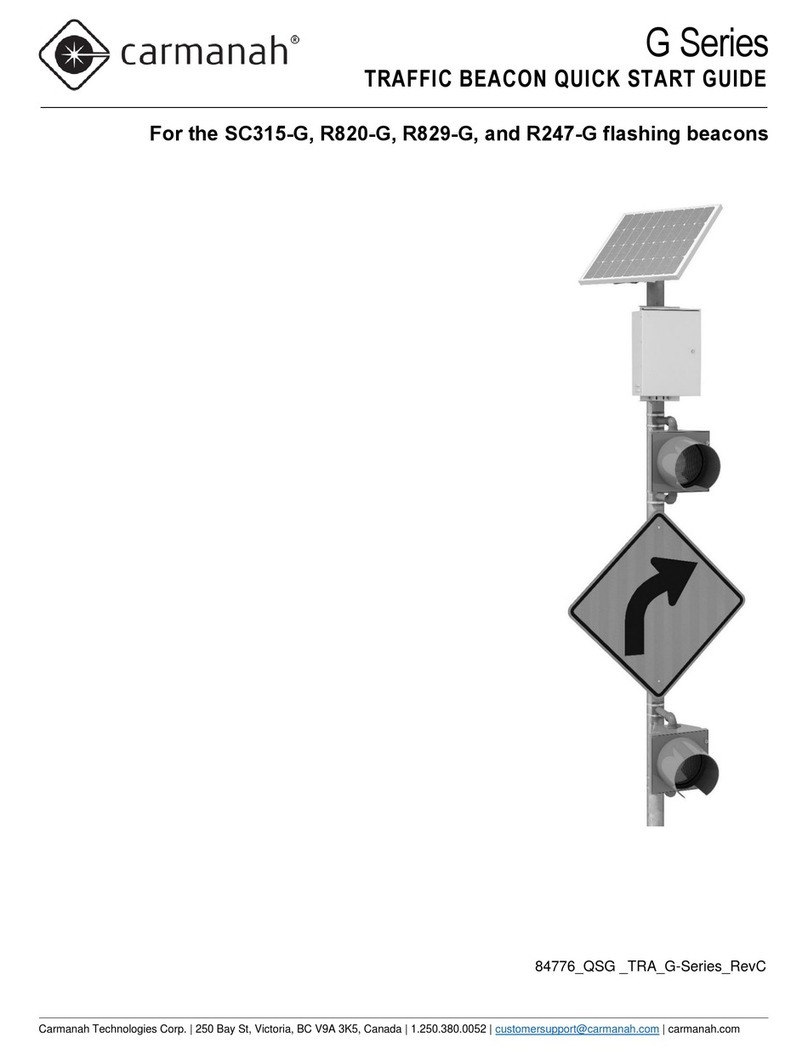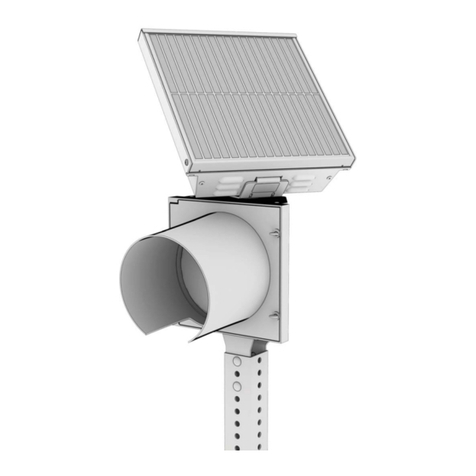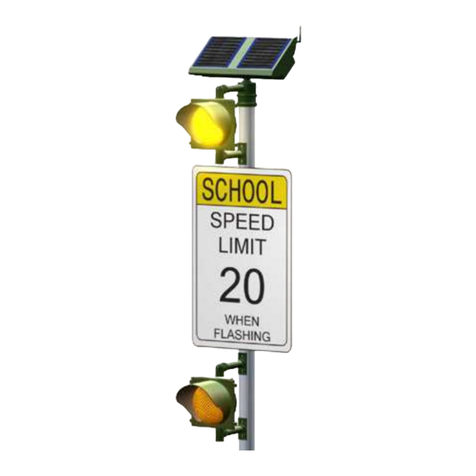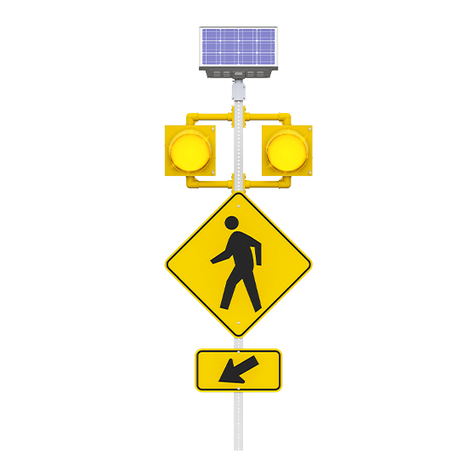3.1 Commissioning
After installing and programming the E/F Series flashing beacon system, the following commissioning verification
checklist helps ensure that everything is working as it should be and that your system is ready to serve the public
for many years of reliable and sustained operation.
EMS settings are correct.
No LED fault message on the EMS.
For single or triple fixture systems, ensure the flash pattern is set for unison.
Fixtures flash properly: use “TEST” at the EMS user interface to check functionality of LEDs.
Fixtures are tightened and pointed in the correct direction toward oncoming traffic lanes.
Retrieved calendar from R829 is confirmed to be accurate and calendar setting is set to “on” if applicable.
Solar panel pointed South (or as per specific instructions provided by Carmanah).
Override box (if equipped) correctly activates or deactivates the flashing (depending on model input
setting).
The solar panel is properly latched, and the solar engine body is secured tightly and unable to spin.
No debris covering the photosensor window on top of the solar engine.
Vents are clear, and screens are intact.
Sealing gaskets on door are intact.
Solar panel is producing voltage in sunlight (use EMS “Solar” user interface menu item).
System has clear sky access and no removal of obstructions is required.
Note the possibility for nearby foliage to eventually shade the solar panel at a different time of year. If so,
set a reminder to inspect later.
Battery voltage is healthy (use either a voltmeter or EMS “Battery” user interface menu item).
Verify both fuses are intact so that the system doesn't just run off a single battery (use multimeter to
confirm fuse continuity or disconnect each fuse individually and confirm the other fuse still allows EMS to
operate).
Yellow fuse holders are tightly sealed to prevent water ingress.
RRFB light bar flashing starts with left module first if applicable.
Remote systems are turning on and off correctly via wireless control if applicable.
For RRFB systems, verify the indicator LEDs on the ends of light bars can be seen by pedestrians across
the street.


































